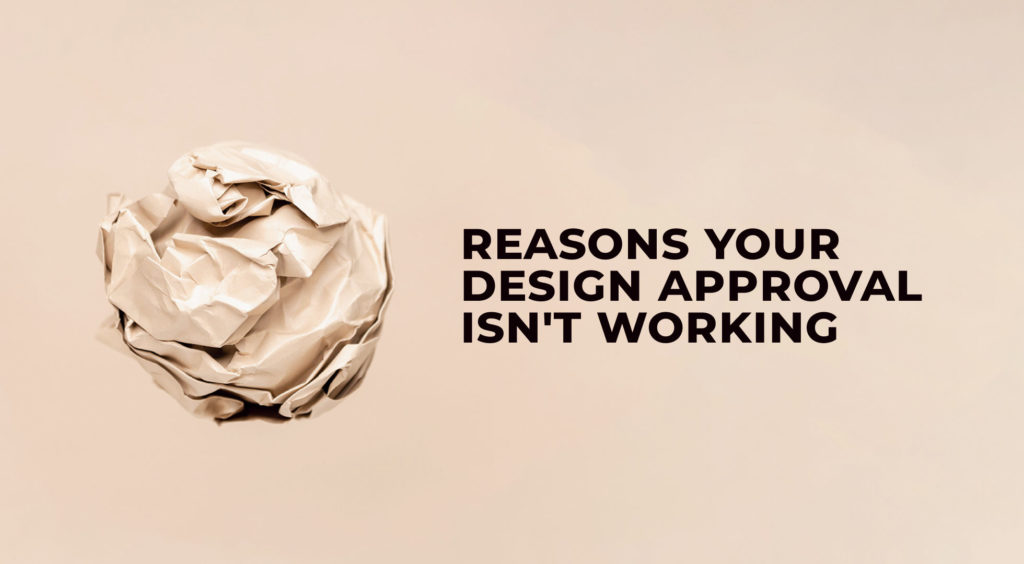Design approval is a crucial process that ensures that products, systems, or structures meet specific client requirements and regulatory standards before they are put into production. Checking for your own mistakes is a vital step in the development process that helps to protect not only your reputation but also consumers and the public from potential misuse of the end product. However, although important, design approval is a complex and time-consuming process, and common issues can arise that damage its effectiveness.
The question is, how to avoid whatever dire consequences it can bring about? Of course, we have an answer to that, but first, let’s look at the issues at hand in detail.
Table of contents:
1: Communication and Collaboration

First things first, poor communication and collaboration between stakeholders in the design approval process can lead to delays and confusion, as well as mistakes and errors. When stakeholders are not communicating effectively, it can be challenging to ensure that everyone is on the same page and understands how the design project is about to unfold.
In a design approval process, the design team is responsible for creating the design, and the project manager and the client themselves are responsible for reviewing the design for compliance with requirements. Misinterpret, don’t mention, or ignore something, and you’ll have missed the deadline on your hands at best. This can lead to a lot of frustration, as you may need to make changes to the design to meet their requirements, and the approval cycle will repeat itself over and over again.
The company must encourage clear communication and collaboration between all stakeholders, including the design team, engineering team if you have any, PMs, clients, regulatory bodies, and whoever else you have working on a project. This can be done by establishing regular meetings, creating shared document libraries, and discussing any issues or concerns that arise during the design approval process. But the best and most efficient way to do it is by using design review tools — just like the one Approval Studio can offer.
2: Understanding Regulations And Standards

One of the most common reasons for design approval not working effectively is a lack of understanding of the regulations that apply to the product. Mind you, this is about more than just the client’s requirements, as they are not the only things you should pay attention to. Non-compliance with certain universally recognized standards can result in the product being rejected or recalled or even fines and penalties.
Incorrect barcode size on your packaging can cost you much more than you initially had in your budget if you allow it to go to production, which is why you must be very attentive to details in such projects. It could lead to costly redesigns, delays in getting the product to market, and potential legal issues if the non-compliant product were to cause harm. The company must research and understand the regulations and standards that apply to its products, systems, or structures. This includes industry-specific and general criteria, such as safety, performance, and environmental regulations.
To solve this problem, Approval Studio offers a reference files section where you can upload any project-related documentation you need.
3: Project Documentation And Tracking

Another common issue that can impede an effective design approval process is insufficient documentation and tracking. Without proper documentation and monitoring, it can be difficult to demonstrate compliance with requirements and identify any issues in the process.
Look at it this way: the design team may have completed all the necessary testing and validation of the design, but with proper documentation and tracking, it can be easier to verify that the design meets the essential standards we’ve discussed before. This can lead to delays in the approval process as you will likely need to recheck everything or request additional info.
Solution: develop a comprehensive checklist of the requirements that need to be met for design approval and a documentation process that allows the team to track and demonstrate compliance. This will ensure that the design meets the required standards and regulations and can help to streamline the process and reduce errors. Approval Studio review system has such checklists, by the way.
4: Design Testing And Validation

Next on the list is inadequate testing and validation of the design. A company may have designed a new medical packaging, but without adequate review, they may not have fully considered the potential risks that error can bring — textual mistakes, size of the barcode, etc. As a result, the package may not comply with safety standards and may be rejected by regulatory bodies. Furthermore, if somehow it is approved and put into use, it may cause harm to patients if it does not perform as intended.
Solutions are common and include testing prototypes, simulations, and risk assessments. The latter is best to do in multifunctional design review and project management software like Approval Studio. It can check your barcodes, spelling, and every other minute detail before putting it into production. This will ensure that the design is safe and reliable and can help to streamline the process and reduce errors.
5: Managing Resources

Biting more than you can chew is old as the world itself, but it still keeps happening. A lack of resources, including personnel, budget, and equipment, can doom your design project even before it is started. With adequate resources, it can be easier to ensure that the design is safe and reliable and that the process is efficient and adaptable.
It is vital for the company to provide adequate resources, including personnel, budget, and equipment, to support the design proofing. This includes having enough staff to complete the necessary tasks, having the budget to purchase the required equipment, and having the resources to conduct the necessary testing and validation. While we cannot help you with your budget assessment, Approval Studio can provide all your stakeholders free access to the tool without registering to check your design. Send them the link, and you’re good to go!
6: Timing And Deadlines

Timing can be essential in the design review and approval, and not having a clear understanding of the timing and deadlines can cause you a lot of trouble. Failure to meet deadlines can result in delays in getting the product to market and increased costs. Furthermore, the company may take advantage of the window of opportunity if the product is approved timely, resulting in bigger sales or market share. Most importantly, it can lead to potential loss of clients because your reputation will sink down with astonishing speed should you fail a couple of projects in a row.
If this nightmare seems familiar to you, you’d better learn to clearly understand the timing and deadlines of the design approval process and plan accordingly. You must consider everything: time for establishing the creative brief, first drafts, time for reviews and edits, and the project is better to have some time safety pillow to lean on if something goes sideways. This will mean the product is launched promptly, and the company does not miss any business opportunities.
The best way to prepare for new projects is by analyzing the previous ones — both successful and, if such a thing ever happened in your career, the ones that failed. Approval Studio provides comprehensive, detailed PDF reports for your projects that can help you do just that.
7: Risk Management

Every project has associated risks, and poor risk management can lead to missed issues in the design approval process. Proper risk management makes it easier to identify and mitigate potential issues that arise during the product’s design and production. This can result in products that fail their market objective, are not safe or reliable and can lead to recalls, legal issues, and damage to the company’s reputation yet again.
The company needs to establish a comprehensive risk management process that includes identifying potential hazards, evaluating their likelihood or impact, and implementing mitigation controls. This can be done by performing a hazard analysis, conducting simulations and testing, and reviewing the design with a focus on safety and reliability. This will help ensure that the design meets the necessary standards and brings the customers joy and satisfaction instead of mental or physical trauma from seeing horrendous design or actually trying to use the product.
Design collaboration software such as an Approval Studio will be able to help you detect those incompliances and discuss the ways to deal with them in your online review sessions right in the proofing tool.
8: Workflow And Team Flexibility

A rigid design approval process can be difficult to adapt to changing needs and requirements, which can result in delays and even failure of the process. When the process is inflexible, it can be challenging to make changes to the design or to respond to new information or requirements that arise during the process — and if you’ve worked in the sphere even a little, you know for sure that they ALWAYS occur. This can lead to delays in getting the product to market, increased costs, and potential loss of business opportunities.
Weirdly enough, the first step to achieving flexibility has a clear and well-defined process. The more straightforward and easy-to-understand your design workflow, the simpler it is to build upon it by allowing for changes and adjustments and providing the necessary resources to make those changes. This will help ensure that the product is launched on time and that the company sees all business opportunities.
Additionally, having a flexible process also allows for innovation and adaptation to market changes, which can be crucial for staying competitive in today’s fast-paced business environment. This can be done by having a responsive team, involving key stakeholders early in the process, and incorporating design feedback and suggestions. Again, an easy solution to work with the feedback and add flexibility to your team is to have a trusty online proofing tool that will record and display all the changes, unexpected client edit requests, approvals, and rejections.
Online Review Software As a Solution

So, we at Approval Studio believe that having a proper online review tool will greatly help your workflow. Spoiler alert: there is no magic button to fix everything automatically, but this will be a huge step forward, and we are more than eager to help.
Review and approval software can help address and fix common issues in the design approval process by automating tasks, facilitating collaboration and communication, and ensuring compliance with requirements. Approval Studio provides a centralized platform for managing the design approval process and can help streamline the process, reduce errors, and improve efficiency.
Some key features of design review tools like Approval Studio that can improve the effectiveness and efficiency of the design approval process include the following:
- Electronic document management and version control to ensure that the most up-to-date versions of documents are being used and reviewed.
- Collaboration tools to facilitate communication and collaboration between stakeholders.
- Automated workflows to streamline the process and ensure that tasks are completed on time.
- Compliance tracking and reporting to ensure that the design meets the necessary standards and regulations.
- Real-time analytics and reporting to help identify bottlenecks and inefficiencies in the process.
- Mobile access to support remote working and real-time collaboration.
By utilizing review and approval software, companies can improve the effectiveness and efficiency of their design approval process and ensure that their products, systems, and structures are safe, reliable, and compliant with requirements.

 TEAM SOLUTIONS
TEAM SOLUTIONS WORKFLOW SOLUTIONS
WORKFLOW SOLUTIONS



 REVIEW TOOL
REVIEW TOOL PROJECT MANAGEMENT
PROJECT MANAGEMENT TOOLS & INTEGRATIONS
TOOLS & INTEGRATIONS
 CLIENT INTERVIEWS
CLIENT INTERVIEWS









